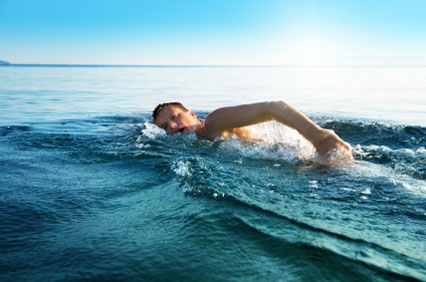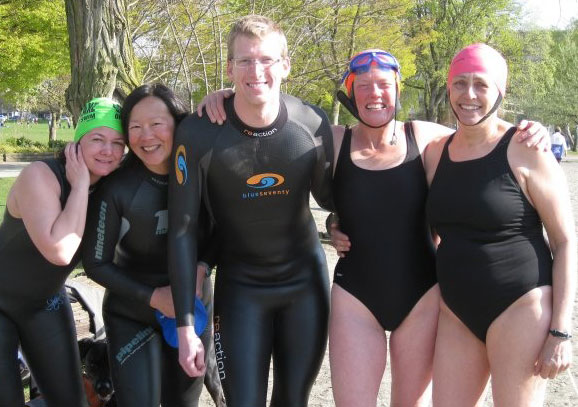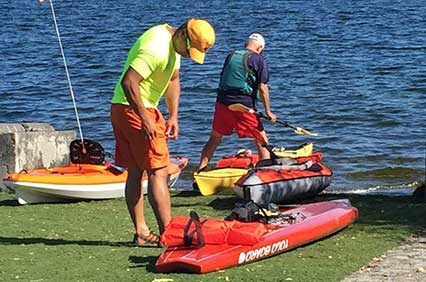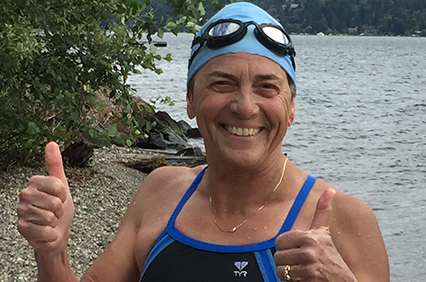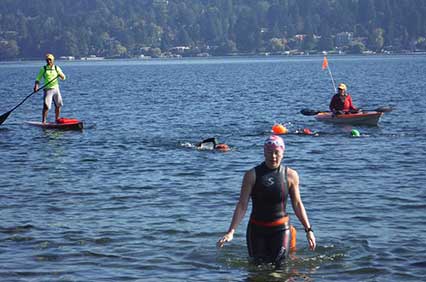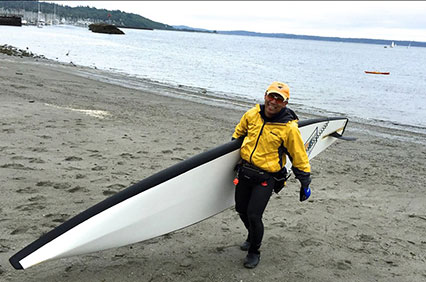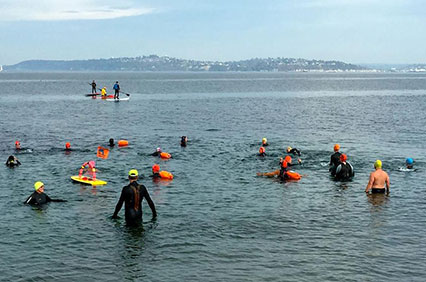September 10th, 2024Why Winter Swim?
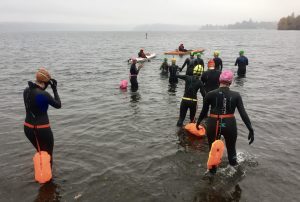
Want to experience the “cold water high”? Here are early tips to make your winter swimming joyful and safe.
How Cold is Too Cold? How Long is Too Long?
Keep these 5 guidelines in mind:
- Acclimate with repeated short exposures.
- Accept that everyone is different. There is no universal “right amount of time or distance” to achieve comfort.
- Know that your acclimatization, body mass, what you ate for breakfast, hormone levels, emotional state, and other factors play a part in your reactions to cold water. What was true yesterday may not be true today.
- If you shiver while in the water, get out immediately. Shivering helps you warm up once you’re dry, but indicates a dangerous level of cold before then.
- Be even more cautious when it’s windy. Wind reduces your temperature amazingly fast, especially when your skin is wet.
For winter swimming, a general, guiding principle is simply “be conservative.” For excellent info about hypothermia, watch this video from the South End Rowing Club in San Fransisco.
Equipment
Extra neoprene is good: wetsuit, booties, gloves, cap. If you swim “skin” (wetsuit-free) just your suit, goggles, and a bright cap will do. Silicone earplugs are a MUST for many. And don’t forget your swim buoy and a towel or two.
Warm Up After Your Swim
What to Wear & Eat: Dry yourself ASAP and dress from the top down: put your knit cap on first. Then, layer up with thick socks, warm shoes, and sweaters/jacket/parka. Drink something warm and consider eating something sweet. Doughnuts definitely fit the bill.
What to Do: Stand on something to prevent further heat loss while you dress. Do squats, burpees, or jumping jacks. Then find a warm place to sit. Do not drive until your brain feels normal again-possibly as much as 20-30 minutes after you exit the water.
Swim Smart!
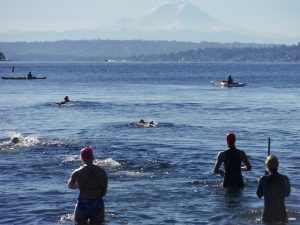 The rush of feel-good hormones after a swim is highly addictive, to be celebrated and enjoyed. But remember: If open water swimming is inherently risky, doing so in winter is even more so. Winter swimming may help build immunity, reduce your risk of heart disease, and give you joy. Just be smart.
The rush of feel-good hormones after a swim is highly addictive, to be celebrated and enjoyed. But remember: If open water swimming is inherently risky, doing so in winter is even more so. Winter swimming may help build immunity, reduce your risk of heart disease, and give you joy. Just be smart.
Happy swimming!


